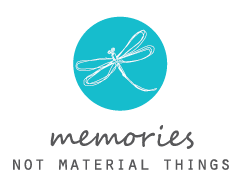Livingstone, Zambia – As we drove into Livingstone, my mind jumped back to when I was a sophomore in high school to my world geography class. That was over twenty years ago, but I still remember clearly learning all the countries and capitals of Africa. Pouring over the paper map before me. Trying to place the names within the right boundaries. It was a daunting task as there were so many. Memorising them all was tedious. The final test agonising. I’ve long forgotten most of what I learned and indeed some boundaries and names have changed since then, but I never forgot about Victoria Falls. The images of this massive waterfall in the middle of Africa mesmerised me. Back then, it seemed to exist in a remote foreign land, far, far away. A place one would probably never see with their own eyes. Yet, here I was entering the town named after the first European to see the falls, David Livingstone. Suddenly, Victoria falls wasn’t in a foreign land. I’d been emersed into this continent for three weeks and now in the distance I could see the billowing spray which marked where the water tumbled over the edge. Once again, I was jarred by the reality. What I saw and felt during my three days was so entirely different than I had imagined so far away, so many years ago, that the two seemed like different places entirely to me. And they always will. There will always be in my memory the way I imagined Vic Falls when studying it in my world geography class and the Vic Falls I actually experienced. They are two seperate places for me.
Given that we were in Livingstone to see the Falls, you’d think I’d rush over to the national park and explore immediately. For reasons I can’t explain, I left visiting the falls properly until the last day. So on Saturday, when most of our group headed off to see the falls or go white water rafting down the Zambezi, I went on a bicycle tour though the villages near the town. On two wheels, with the wind in my hair is still my favourite way to explore a new area. With two wheels, you can get off the beaten track a little and go where there are less tourists and more locals. The fact you don’t have the metal armour of a car or truck around you, makes you more vulnerable and exposed, and in turn makes the locals a little less intimidated about approaching you. On two wheels you can you can really start to see, feel and understand a culture. Our four hour ride lead by local Patrick was no different.
It wasn’t long before we turned off onto a dirt road and passed some local school children in uniform heading to school. Our guide explained they would often have to walk up to 8km a day one way to get to school and often through the dangerous tracks of elephants. They shouted ‘hello’ at us and gave us high fives. Winding through the villages we were greeted with frequent shouts of ‘Mzungu” from the children, meaning, affectionately I was told, ‘white person’. Our first official stop was the Local Cowboy PreSchool. Children in Zambia have to pay to go to school. This was an orphanage school, free for those children that couldn’t pay, and I learned was established and maintained through the profits of the bicycle tour. It was break time and the playground was chaos! We were greeted by the principal, the teachers, and the students with exuberance. I’ve loved visting the schools on my travels. Loved the kids. Their smiling faces. Their energy. And their respect for elders, which I think is starting to fade in Western schools. After a quick tour we entered a classroom who had now assembled after the break. They all rose from their seats as we walked in, a sign of respect, and then sang us a welcome song. Adorable. Adorable. I wanted to take them all home, but as my travelling companion Michael keeps telling me, “You can’t take home everything you find cute.” He has so far forbade me to take home cats, baby elephants, baby zebras, and lots of children.
The next stop was a local market. I’ve seen so many on my travels, but still enjoy the visit. There were the usual piles of fresh produce and the fly infested area of dried fish. Different this time though was a pile of white rocks that the local women kept coming up to eat, apparently for the iron. Cheaper than tablets I was told. I was most thrilled to stumble upon a fabric shop with hundreds of designs. Local women take this fabric and wrap it around their waist for a skirt. Simple. I wanted the material for a skirt as well, but to copy a more designed one I purchased in London some years ago. Choosing one pattern was hard, but given it was only 30 Kawcha, less than 3 quid, I’ll buy some more if I get a chance.
We then headed into one of the poorer villages East of town. We visited a grandmother to see how the traditional homes are built. And then on to a quarry, where the village women mine the slate rock by hand. First breaking off huge chunks from the earth, then painstakingly hammering into smaller coin size pieces. This was then sold for $1 a wheelbarrow full. They might sell one or two loads a day. Such a back breaking job for so little. So humbling again, at what a privileged life Westerners lead. Our 17km ride made me feel like the first time on this trip that I was truly in Africa. Something only venturing on two wheels could give.


